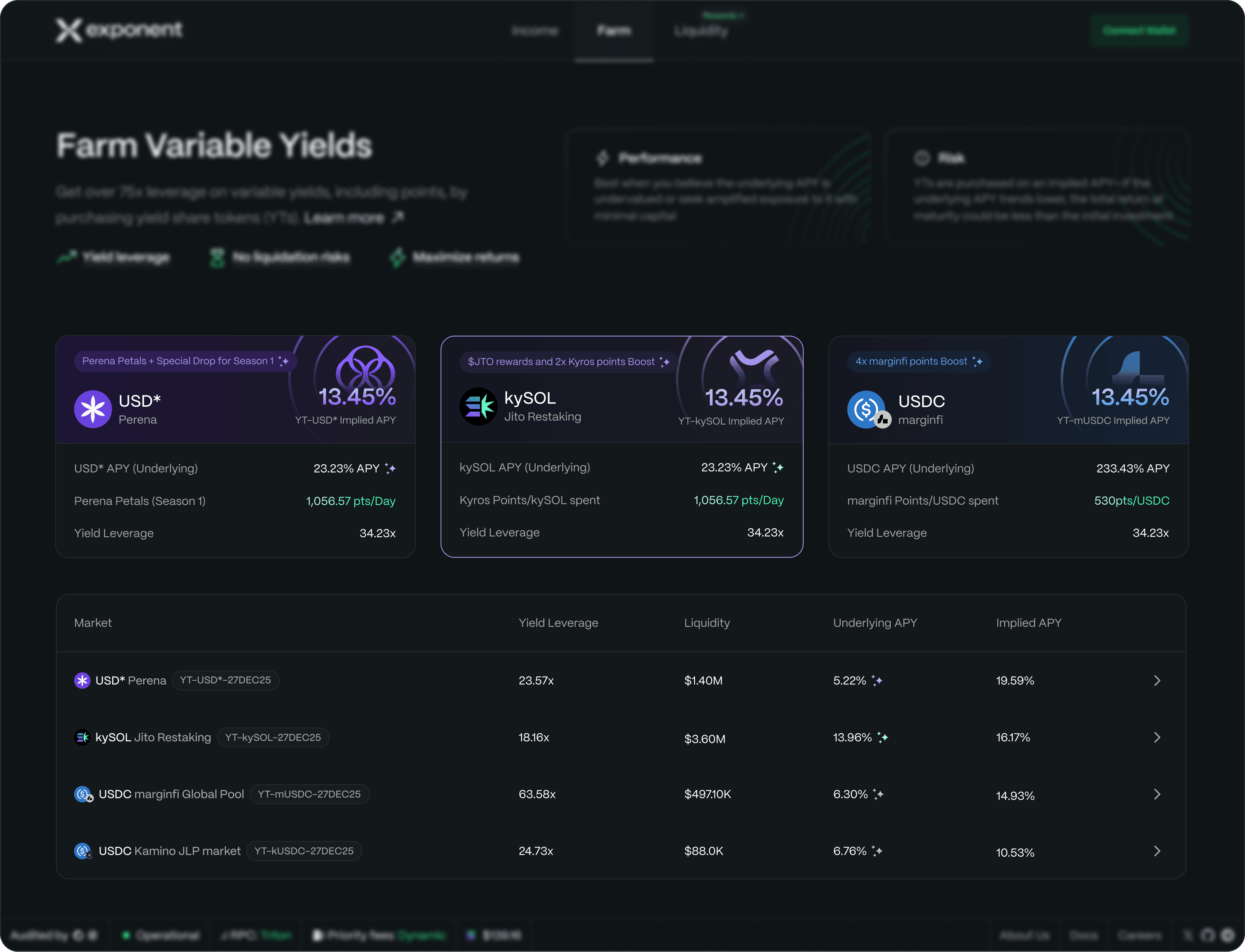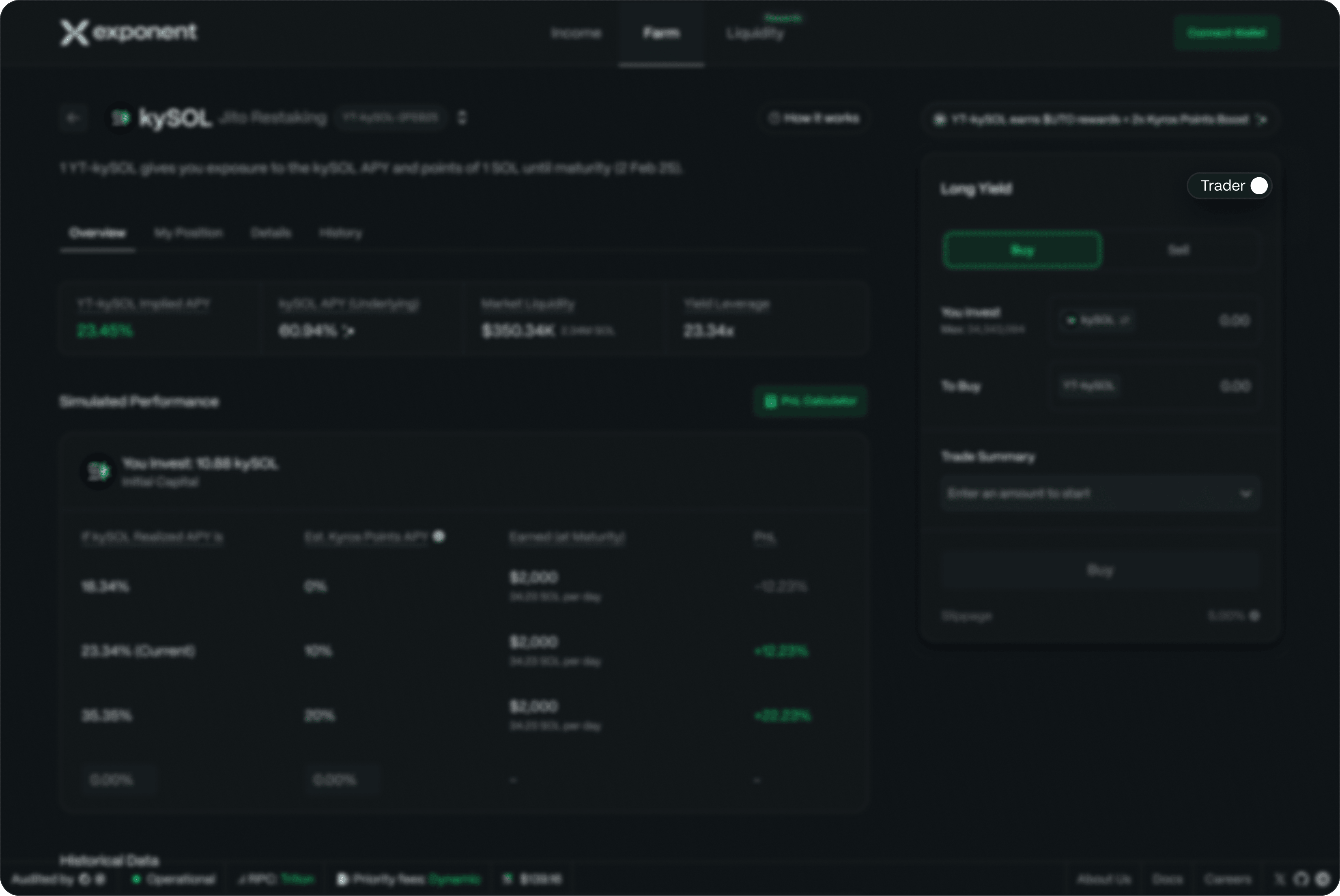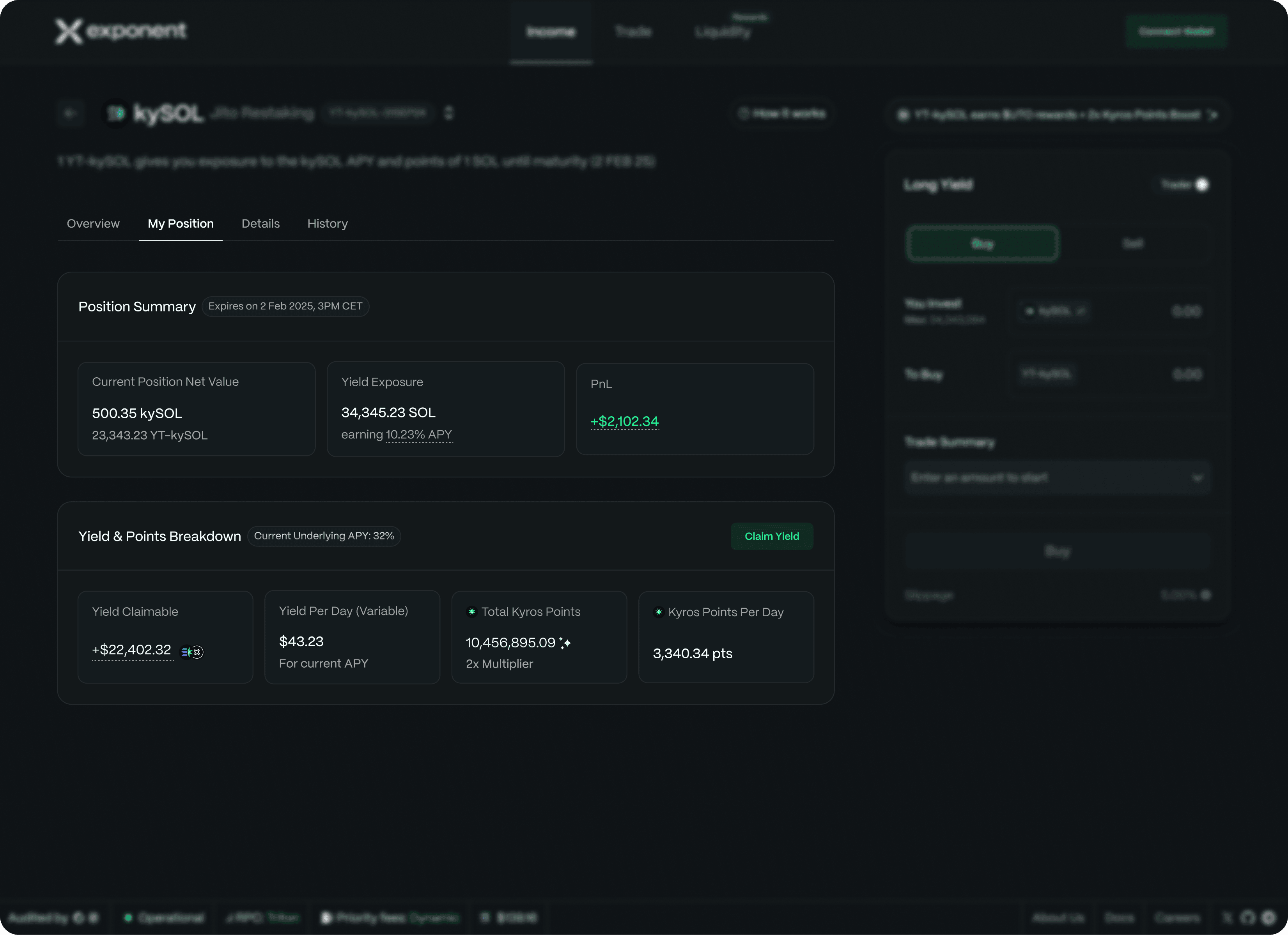- Overview
- Yield Trading Basics
- How it works
Farm enables anyone to maximize exposure to variable yields from Exponent markets.Users can swap their productive assets for Yield Tokens (YTs) if they believe the current underlying APY is undervalued. You want to generate more from the APY and points earned by YT than the cost of acquiring it.
Ultimately, yield tokens (YTs) capture all the underlying yield accruing, including airdrops from converted points. If you believe that the current variable APY is undervalued and likely to realize a higher return at maturity, you can profit and earn more yield than your initial investment.

What are Yield Tokens
A yield token (e.g. YT-JitoSOL-31JUL25) represents the variable yield component of a yield market, earning all the yield and points generated by the principal component (e.g. PT-JitoSOL-31JUL25) until maturity. To sell off the variable yield stripped from the principal tokens backing Income Tokens, the accruing yield is tokenized until maturity, where 1 YT represents 1 share of the yield per unit of principal. The Implied APY reflects the market’s pricing of the remaining future yield that will be earned by the principal amount (e.g. PT-JitoSOL-31JUL25). Implied APY = Expected Yield ReturnBuy
When purchasing YT, you pay an Implied APY, which represents the estimated realized return at maturity from the principal.
Sell
Selling YT pushes its price down, making exposure to the yield generated by principal tokens cheaper, thereby reducing the Implied APY
How Farming Yield Through YT Works
How Farming Yield Through YT Works
Farming yield through Yield Tokens (YTs) requires active management. This is because acquiring YTs requires to pay an “Implied APY”:
- This represents the expected yield return from the principal tokens.
- If the realized APY at maturity is lower than the implied APY you bought, it means you will receive less yield than your initial investment.
- The “implied APY” traded on the market is a forward projection of the future yield, and it will not necessarily match the historical performance of the underlying product.
- If the implied APY on Exponent is lower than its underlying, traders who expect the underlying to remain stable can take advantage of this and collect more yield over time than what the market currently prices the future yield at.
Get Started
1
Head to exponent.finance/farm
2
Select the market you wish to maximize exposure to
Look at the maturity and available liquidity.

3
Use Trader or Farmer mode
You can use simulated performance to quickly understand potential returns.

4
Input your size amount
Double-check the estimated Implied APY Orders on Exponent are market orders.

5
Click on Buy
The Yield Tokens bought (YT) will appear under “My Position”. Any new order will update your position.

As soon as a position is opened, it will automatically accrue the underlying yield to the Yield Share Tokens you held. This includes interests as well as incentives and points. YT holders need to manually claim yield distributions. Every claim will be counted towards PnL.

